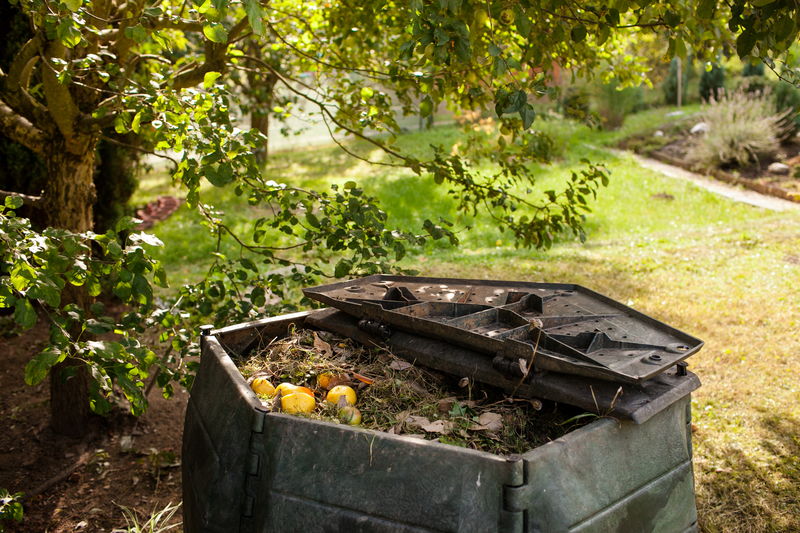Transform Your World: Hoarder Clean Up and Clutter Removal Methods
Is your home overwhelmed by uncontrollable clutter or hoarded possessions? Do you feel lost in the chaos and unsure of how to reclaim your space -- and peace of mind? Transforming your living environment isn't just about cleaning up; it's about changing your life for the better. In this detailed guide, we'll walk you through hoarder clean up solutions and effective clutter removal methods--offering practical advice, expert strategies, and motivational support to help you or someone you care about achieve a fresh, welcoming living space.
Understanding Hoarding and Clutter: What's the Difference?
Before diving into hoarding clean up techniques and clutter removal strategies, it's important to recognize the distinction between hoarding and traditional clutter.
- Clutter refers to disorganized, scattered items that are no longer used or needed, but can generally be addressed with regular sorting and cleaning.
- Hoarding disorder, however, is a recognized mental health condition characterized by an overwhelming difficulty in discarding or parting with possessions, regardless of their actual value.
Why does this distinction matter? The approach to cleaning and decluttering differs greatly between dealing with mild clutter and the complex challenges presented by hoarding. Understanding this ensures a compassionate, effective, and lasting clean-up process.

Why Take Action? The Benefits of Hoarder Clean Up & Decluttering
- Improved Health: Removing clutter reduces allergens, dust, mold, and tripping hazards.
- Enhanced Safety: Less clutter means easier movement and decreased risks of fire or injury.
- Mental Well-being: A clean space supports mental clarity, reduces stress, and boosts happiness.
- Restored Living Space: Transform rooms into functional areas for relaxation, work, hobbies, and entertainment.
- Better Relationships: Clean homes foster healthier dynamics with family, friends, and neighbors.
Reclaiming your environment can transform your world -- physically, emotionally, and socially.
Step-by-Step Guide: Hoarder Clean Up and Clutter Removal Methods
Step 1: Assess the Situation
Begin with a thorough assessment. Take photos, note affected areas, and make a list of spaces that need attention. Gauge the severity using hoarding scales or professional evaluations if necessary.
- Is the clutter limited to certain rooms, or is the entire home affected?
- Are there health or safety hazards present -- mold, pests, blocked exits?
- Is this an ongoing struggle with hoarding disorder, or is it a matter of excess clutter?
Step 2: Plan and Prepare
Preparation is crucial for a successful hoarder clean up process. It can be physically and emotionally demanding, so having a plan helps avoid overwhelm.
- Set realistic goals: Focus on one area at a time (e.g. kitchen, bedroom, garage).
- Gather supplies: Trash bags, boxes, cleaning agents, gloves, dust masks, and storage containers.
- Consider professional help: For extreme cases or biohazard conditions, hire professional hoarder clean up services.
- Assemble your support team: Involve family, friends, or support groups for physical and emotional assistance.
Step 3: Sorting and Decision-Making
Sorting possessions is at the heart of decluttering. This stage may be sensitive, especially for those dealing with hoarding tendencies, so gentle support and patience are key.
-
Make Categories:
- Keep
- Donate
- Sell
- Recycle
- Trash
-
Ask Tough Questions:
- Is this item useful or sentimental?
- When was it last used?
- Will I miss it if it's gone?
- Set Limits: For example, only keep items that fit into a designated container or space.
Tip: When in doubt, put questionable items in a "maybe" box. Revisit them after the first round of sorting.
Step 4: Removal and Disposal
Clutter removal involves more than tossing things out. It's about responsibly letting go and ensuring belongings are handled ethically and sustainably.
- Dispose responsibly: Recycle electronics, hazardous materials, and furniture at proper facilities.
- Donate gently used items: Many charities and shelters welcome clothing, books, and household goods.
- Arrange for junk hauling: For large volumes or bulky items, consider professional junk removal or dumpster rental.
- Document shredding: Shred personal papers to protect privacy before disposal.
Step 5: Deep Cleaning and Sanitizing
With the clutter gone, it's time for a thorough clean. Dust, vacuum, mop, and disinfect each room. Don't overlook hidden areas like under furniture, closets, and behind appliances--often hotspots for mold, pests, or odors in hoarding situations.
- Use HEPA filter vacuums and air purifiers for dust and allergens.
- Eliminate mold and sanitize surfaces with appropriate cleaning solutions.
- Address pest infestations promptly with professional help if needed.
Step 6: Organization and Maintenance
After the major hoarder clean up, the focus shifts to prevention and maintenance. Develop systems to keep your space neat, functional, and clutter-free.
- Storage solutions: Use labeled bins, shelves, drawer dividers, and closet organizers.
- Implement routines: Daily and weekly cleaning checklists prevent new buildups.
- Adopt "one-in, one-out": For every new item brought in, let go of an existing one.
- Schedule donations or trash pick-ups regularly: Keep the flow of items leaving the home consistent.
Tackling Emotional Challenges in Hoarder Clean Up
Clutter and hoarding are often tied to deep emotional roots: loss, trauma, anxiety, or depression. As such, cleaning isn't simply physical--it's psychological.
- Be gentle and non-judgmental: Avoid shaming or pressuring the individual.
- Encourage small wins: Celebrate progress, no matter how minor.
- Seek professional support: therapists, social workers, and hoarding clean up counselors offer invaluable help.
- Respect boundaries: Never discard items without consent. Empower the person to make their own decisions.
Remember: Recovery from hoarding or chronic disorganization is an ongoing journey. Compassion and patience are essential.
Professional Hoarder Clean Up Services: When to Hire Experts
For severe or hazardous situations, turning to professional hoarding clean up services can offer a safe, fast, and effective solution. Specialists are trained to handle:
- Biohazard waste (mold, bodily fluids, animal waste)
- Heavy debris removal
- Pest and odor control
- Hazardous materials (chemicals, expired medications)
- Legal compliance with local codes or property management
Benefits of Hoarder Clean Up Companies:
- Discreet, non-judgmental service
- Specialized equipment and protective gear
- Efficient processes for large jobs
- Can coordinate repairs or restoration if needed
Tools and Supplies for Clutter Removal
- Large trash bags and heavy-duty garbage cans
- Labeling supplies and permanent markers
- Storage bins, boxes, and baskets
- Cleaning agents, disinfectants, and gloves
- Dust masks or respirators for dusty environments
- Step ladders for hard-to-reach areas
- Paper shredders for sensitive documents
- Donation bags or boxes
Common Questions About Hoarder Clean Up and Clutter Removal
How long does hoarder clean up take?
It varies widely based on the level of accumulation, size of the space, and number of helpers. Some homes can take a day or two, while severe cases may require weeks or longer, especially if deep cleaning or repairs are involved.
Is hoarder clean up covered by insurance?
Most home insurance does not cover hoarder cleaning or clutter removal, unless related to insured events like fire or water damage. Check with your provider for specific situations.
Can clutter removal methods help prevent relapse?
Absolutely. By establishing ongoing routines, practicing mindful acquisitions, and having support systems in place, the risk of relapse decreases greatly for many individuals.
Are there community resources available?
Many local agencies, mental health organizations, and support groups provide assistance, counseling, and even free clean up for those in need. Check with your city, county, or national groups like the National Alliance on Mental Illness (NAMI) or The American Hoarding Association.

Tips for Long-Term Success After Hoarder Clean Up
- Adopt minimalism: Keep only what adds value or joy to your life.
- Limit future acquisitions: Be intentional about purchases and gifts.
- Create regular check-ins: Assess your living environment monthly, and address new clutter quickly.
- Stay connected with support: Attend meetings, participate in online forums, or nurture your support network.
- Be compassionate with yourself: Setbacks are normal. Celebrate progress and keep moving forward.
Conclusion: Transform Your World--One Step at a Time
Hoarder clean up and clutter removal may seem daunting, but with the right strategies, support, and commitment, anyone can reclaim their living space and improve their quality of life. Whether you're helping yourself or a loved one, every step--no matter how small--is a move toward a healthier, happier home. Embrace the process, celebrate each victory, and remember: change is possible, and it starts with you.
For more information or help, reach out to local support groups, mental health professionals, or trusted hoarder clean up services in your area. Start today -- and transform your world.